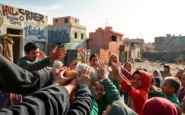Topics Covered
In the increasingly tense Israeli-Palestinian conflict, an unprecedented development has taken place: for the first time, the Israeli government has opened the Gaza Strip to ten influencers, both American and Israeli. This initiative, launched at the invitation of the Ministry of Diaspora Affairs, aims to counter the negative narrative surrounding Israel internationally.
But what is the ultimate goal? To show the world the distribution of humanitarian aid amid growing global outrage over the critical situation in Gaza.
A strategic media tour
This tour wasn't left to chance; it was meticulously organized as a true "counter-narrative" to the news about the humanitarian crisis in the region. According to leaked information, participants used smartphones to document images of humanitarian aid, such as pallets of food and essential goods ready for distribution. Interestingly, while the world is awash with images of suffering and famine in Gaza, this attempt to influence public opinion is being felt powerfully.
Among the influencers who participated in the tour, Xaviaer Du Rousseau, a young conservative with a strong social media presence, stands out. His words resonate: "You can hate me all you want for wanting to see the truth, but it won't change the facts." This approach aims to debunk accusations against Israel regarding the food crisis, but does it really change perceptions?
Participants' voices and international reactions
Brooke Goldstein, another influencer present, shared an image of her visit to Khan Younis on her social media channels, claiming that what she saw contradicted the media narratives. Her statement that "food was being delivered directly into the hands of Hamas terrorists" sparked a storm of controversy, highlighting the differing perspectives on Israel's actions in the region. But how reliable can these testimonies be in such a complex context?
A young Israeli Druze, Marwan Jaber, has strongly criticized the United Nations, expressing outrage at its apparent inaction. These reactions, typical of the growing frustration among young Israelis, raise questions about the role of international organizations and how they address the situation in Gaza.
Propaganda or truth? The debate continues.
The decision to invite influencers rather than journalists has raised legitimate questions about the transparency and authenticity of the information disseminated. Press freedom organizations and international NGOs have expressed concern, emphasizing that these selective tours risk becoming propaganda tools. The orderly and "positive" images disseminated by participants clash with the harsh reality of famine and desperation experienced by Gazans. Where is the truth in all this?
The Israeli government, for its part, staunchly defends the initiative, stating that it is crucial to show "how things really are." However, it remains to be seen to what extent this strategy will change global perceptions of the humanitarian crisis in Gaza, in a context where information is increasingly influenced by social media and selective narratives. How can the public distinguish between truth and propaganda in such a complex landscape?

